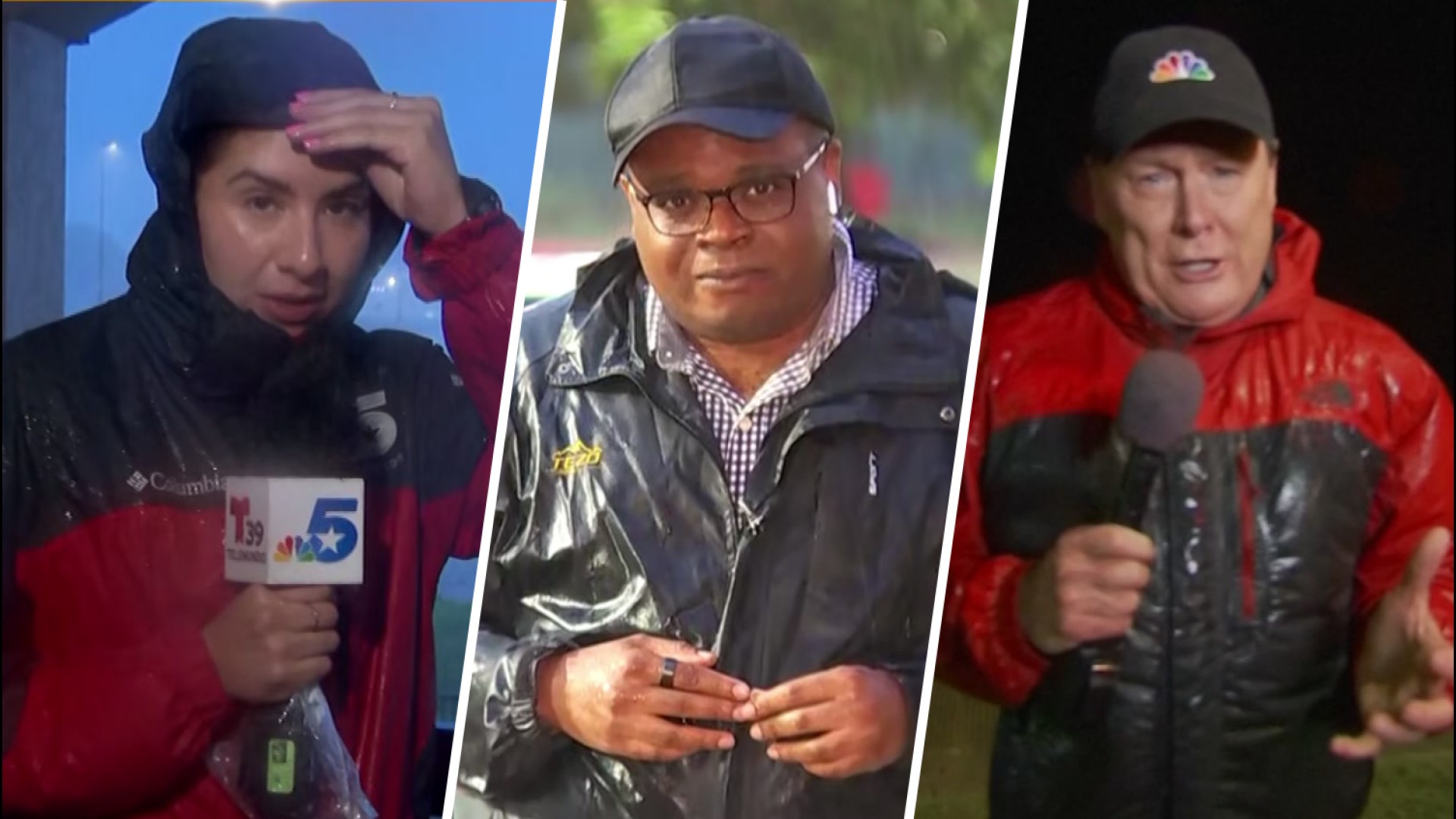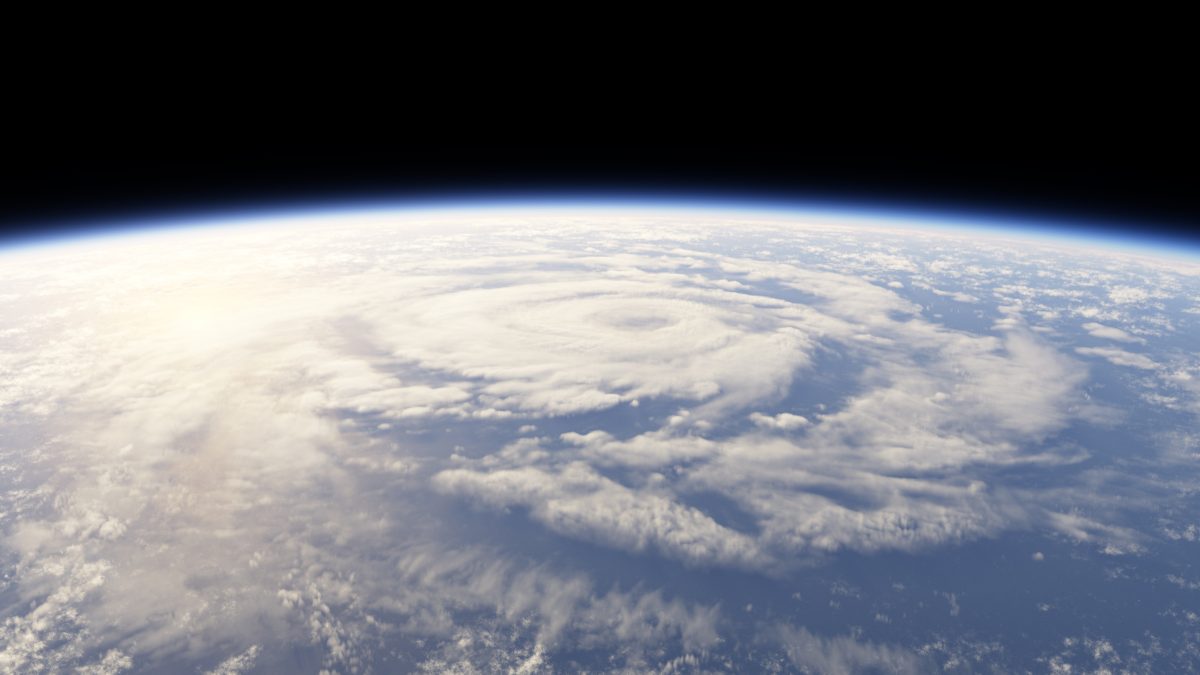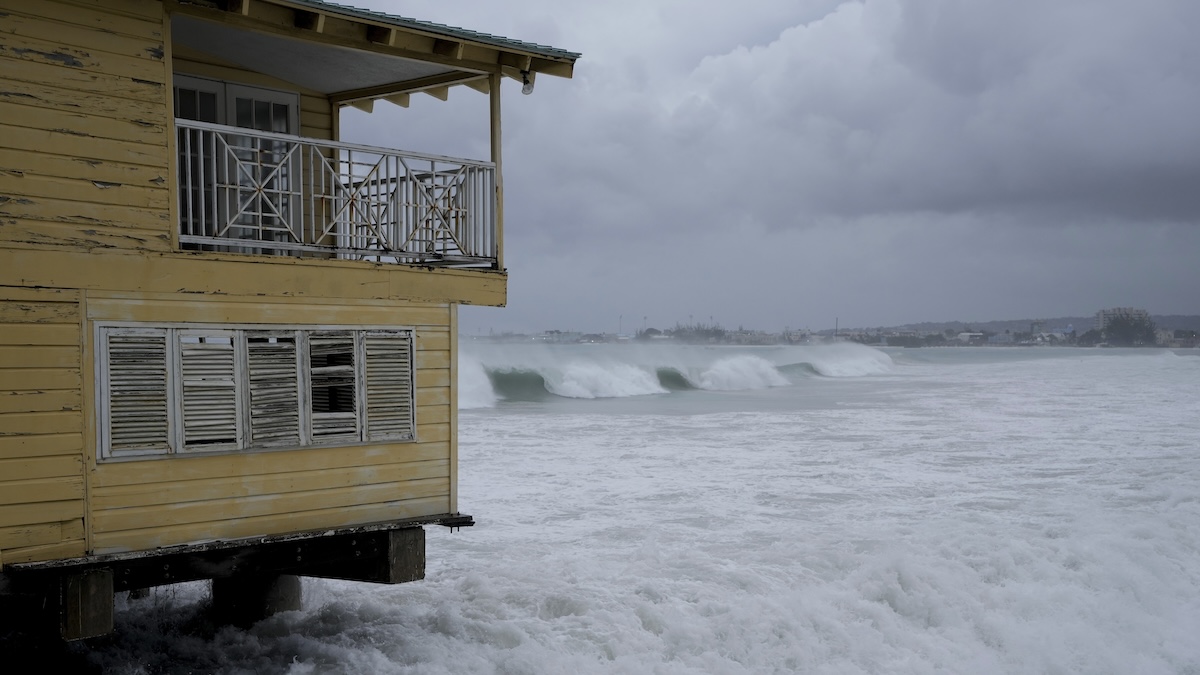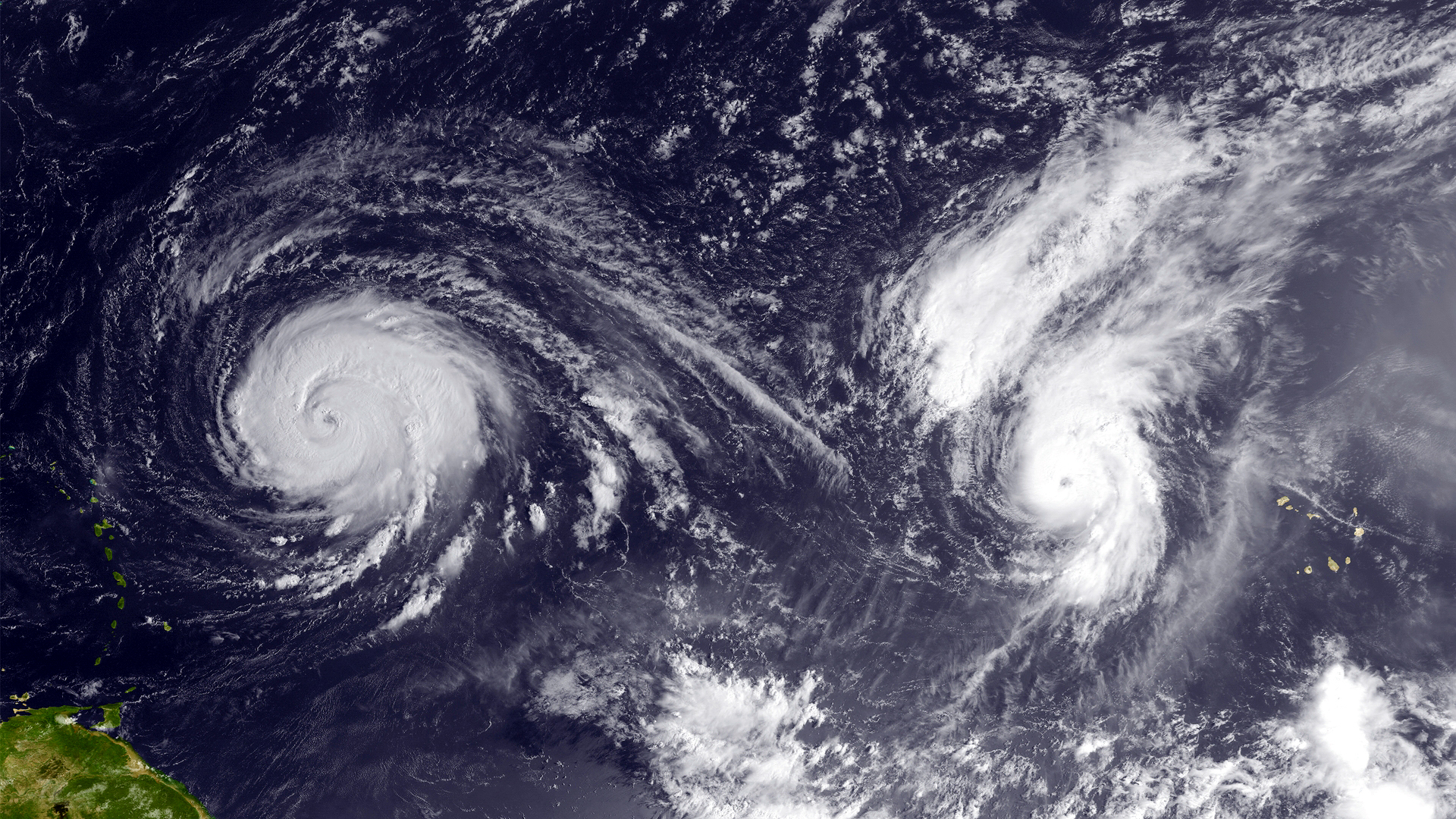HURRICANE BERYL
- Hurricane Beryl came ashore at about 4 a.m. as a Cat. 1 storm with winds of 80 mph.
- Restoring power to 2.7 million customers will be a multi-day event, officials say.
- Seven people have died in Texas since the storm came ashore early Monday.
Tropical Storm Beryl unleashed heavy rains and powerful winds along the Texas coast on Monday, knocking out power to more than 2.7 million homes and businesses and flooding streets with fast-rising waters as first responders raced to rescue stranded residents.
Beryl had already cut a deadly path through parts of Mexico and the Caribbean before making a turn, sweeping ashore as a Category 1 hurricane in Texas early Monday with sustained winds of 80 mph, then later weakening to a tropical storm. At least two people were killed. The National Hurricane Center said damaging winds and flash flooding will continue as Beryl pushes inland.
More than 2.7 million homes and businesses in the Houston area were without electricity, CenterPoint Energy officials said. Texas Lt. Gov. Dan Patrick, who is acting governor while Texas Gov. Greg Abbott is out of the country, said crews cannot restore it until the wind subsides.
Get top local stories in DFW delivered to you every morning. >Sign up for NBC DFW's News Headlines newsletter.
During a news conference Monday afternoon, Patrick and other state officials said restoring power to the area would take several days. CenterPoint Energy customers should call 713-207-2222 to report outages.
For those living in an area where the storm has passed, state leaders recommended they stay indoors after dark due to the large number of downed power lines that may still be energized.
Tracking Beryl -- see the latest storm path and radar images here
Residents without power were doing their best.
“We haven’t really slept,” said Eva Costancio as she gazed at a large tree that had fallen across electric lines in her neighborhood in the Houston suburb of Rosenberg. Costancio, 67, said she had been without power for about four hours Monday and worried that food in her refrigerator would be spoiled.
“We are struggling to have food and losing that food would be difficult,” she said.
High waters quickly closed streets. In flood-weary Houston, where previous storms had already washed out neighborhoods, television stations on Monday broadcast the dramatic rescue of a man who had climbed to the roof of his pickup truck after it got trapped in fast-flowing waters. Emergency crews used an extension ladder from a fire truck to drop him a life preserver and a rope before moving him to dry land.
Houston officials said they had performed at least 15 high-water rescues and more were ongoing.
“First responders are putting their lives at risk. That’s what they’re trained for. It’s working,” Houston Mayor John Whitmire said.
Houston was under a flash-flood warning for most of the morning as heavy rain continued to soak the city. Flood warnings also were in effect across a wide stretch of the Texas coast, where a powerful storm surge pushed water ashore and further inland as heavy rain continued to fall.
Rosenberg police also noted that one of their high-water vehicles was hit by a falling tree while returning from a rescue, and they urged people to stay off the roads. Video footage showed heavy street flooding in the barrier island city of Galveston.
Two people were killed after trees fell on their houses: a man in the Houston suburb of Humble and a woman in Harris County, authorities said. Hundreds of trees fell in the county, crushing vehicles and damaging homes, said Precinct 4 County Constable Mark Herman.
Patrick warned that flooding could last for days and the storm would continue to dump rain onto saturated ground.
“This is not a one-day event,” he said.
Beryl and the widespread power outages were just the latest weather blows for Houston, where nearly 1 million people lost power when deadly storms ripped through the area in May, killing eight people and bringing much of the city to a standstill.
Javier Mejia was one of about 20 people who gathered near the pickup truck rescue site in Houston to take pictures of other submerged vehicles.
“If you don’t have a way through, you’re going to get stuck like that,” Mejia said.
Having experienced previous storms in Houston, Mejia stocked up on food and water before Beryl hit but forgot gas for his portable generator. He planned to spend the day looking for some.
“I don’t want it to go bad. But if not, we can just fire up the grill,” Mejia said.
President Joe Biden was getting regular updates on the storm after it made landfall, the White House said. The U.S. Coast Guard and FEMA had prepared search and rescue teams, and FEMA collected bottled water, meals, tarps, and electric generators in case they were needed.
In the Texas coastal city of Freeport, Patti Richardson said she was riding out the storm in her 123-year-old house.
“We are sitting in the middle of it. It sounds like we are in a train station; it’s that loud and has been going on for about four hours. We’re just hoping everything holds together,” Richardson said. “You can feel the house shaking. … It’s freaky.”
More than 1,000 flights have been canceled at Houston’s two airports, according to tracking data from FlightAware.
The earliest storm to develop into a Category 5 hurricane in the Atlantic, Beryl caused at least 11 deaths as it passed through the Caribbean on its way to Texas. The storm ripped off doors, windows and roofs with devastating winds and storm surge fueled by the Atlantic’s record warmth.
Three times during its one week of life, Beryl has gained 35 mph (56 kph) in wind speed in 24 hours or less, the official weather service definition of rapid intensification.
Experts said Beryl’s explosive growth into an unprecedented early whopper of a storm indicates the hot water of the Atlantic and Caribbean and what the Atlantic hurricane belt can expect for the rest of the storm season.
In Louisiana, heavy bands of rain are expected all day Monday, and “the risk is going to be for that heavy rainfall and potential for flash flooding,” National Weather Service meteorologist Donald Jones said in a Facebook Live briefing on Monday morning.
Meteorologists in Louisiana are watching for lingering rainbands, which could drop copious amounts of rain wherever they materialize, as well as “quick, spin-up tornadoes,” said Donald Jones, a National Weather Service meteorologist in Lake Charles, Louisiana.
“It’s just a matter of exactly where that’s going to be,” Jones said. “That’s very difficult to predict more than maybe an hour or so in advance.”
Beryl battered Mexico as a Category 2 hurricane last week, toppling trees but causing no injuries or deaths before weakening to a tropical storm as it moved across the Yucatan Peninsula.
Before hitting Mexico, Beryl wrought destruction in Jamaica, Barbados, St. Vincent, and the Grenadines. Three people were reported dead in Grenada, three in St. Vincent and the Grenadines, three in Venezuela and two in Jamaica.
SOAKING RAIN, HIGH WATER FLOODS STREETS
High waters quickly began to close streets across Houston and flood warnings were in effect across a wide stretch of the Texas coast and around Houston, which was again under flood warnings after heavy storms in recent months washed out neighborhoods and knocked out power across the nation’s fourth-largest city.
More than 1,100 flights have been canceled at Houston’s two airports, according to tracking data from FlightAware.
Beryl dumped soaking rains across Houston after coming ashore and was expected to bring damaging winds into East Texas, near Louisiana, as the storm pushed north after landfall.
“Beryl’s moving inland but this is not the end of the story yet,” said Jack Beven, senior hurricane specialist at the National Hurricane Center.
BERYL EXPECTED TO WEAKEN AND INCREASE SPEED EXITING TEXAS BY TUESDAY
The National Weather Service expected Beryl to weaken to a tropical storm on Monday and a tropical depression on Tuesday. It forecast a turn to the northeast and an increase in speed Monday night and Tuesday.
The weather service said the storm's center is expected to move over eastern Texas on Monday and then through the lower Mississippi Valley into the Ohio Valley on Tuesday and Wednesday.
The storm reached the U.S. after leaving a trail of destruction over the last week in Mexico and the Caribbean.
Three times during its one week of life, Beryl has gained 35 mph in wind speed in 24 hours or less, the official weather service definition of rapid intensification.
Beryl’s explosive growth into an unprecedented early whopper of a storm indicates the hot water of the Atlantic and Caribbean and what the Atlantic hurricane belt can expect for the rest of the storm season, experts said.
Associated Press reporters Corey Williams in Detroit, Julie Walker in New York contributed, Melina Walling in Chicago and Jeff Martin in Atlanta contributed.






